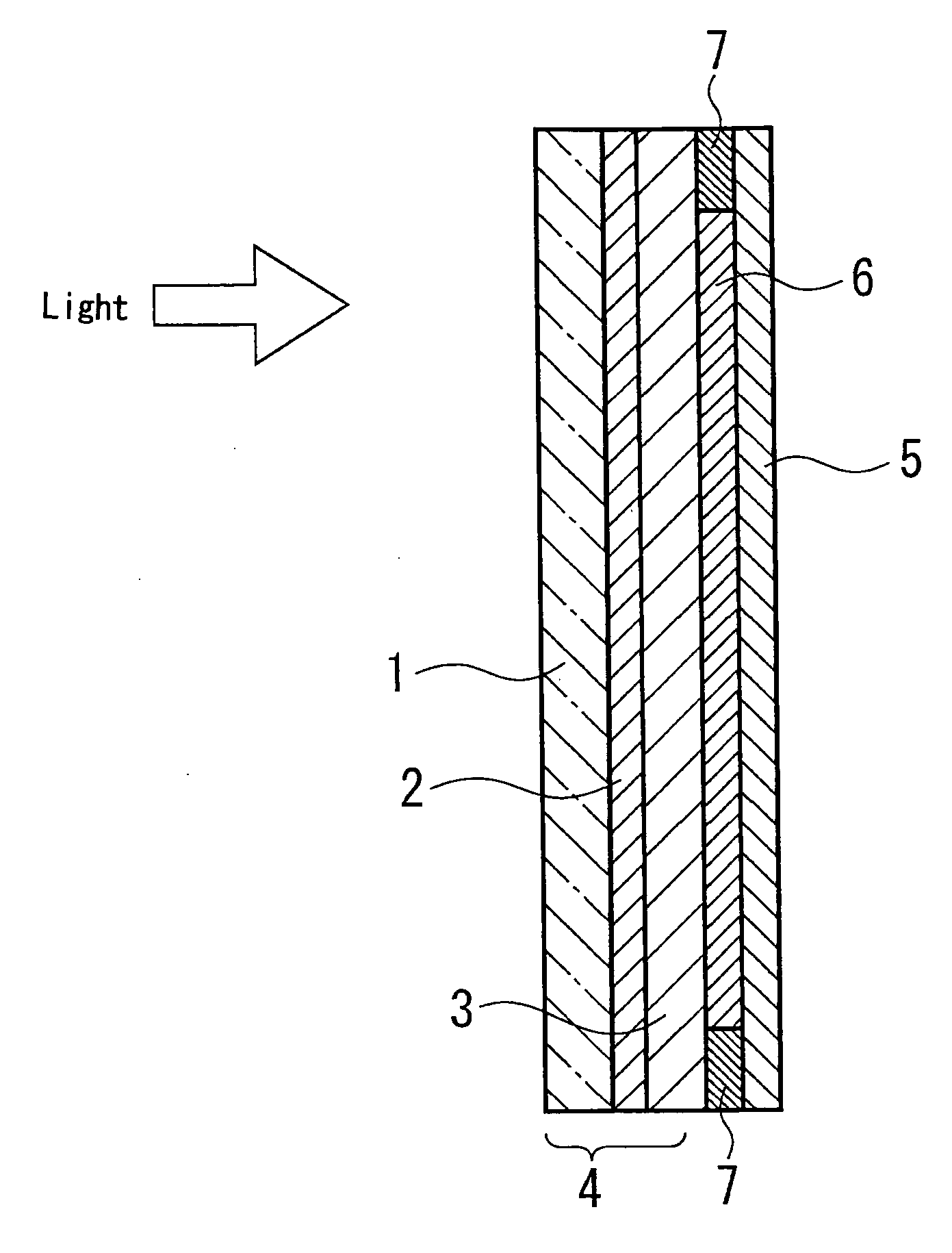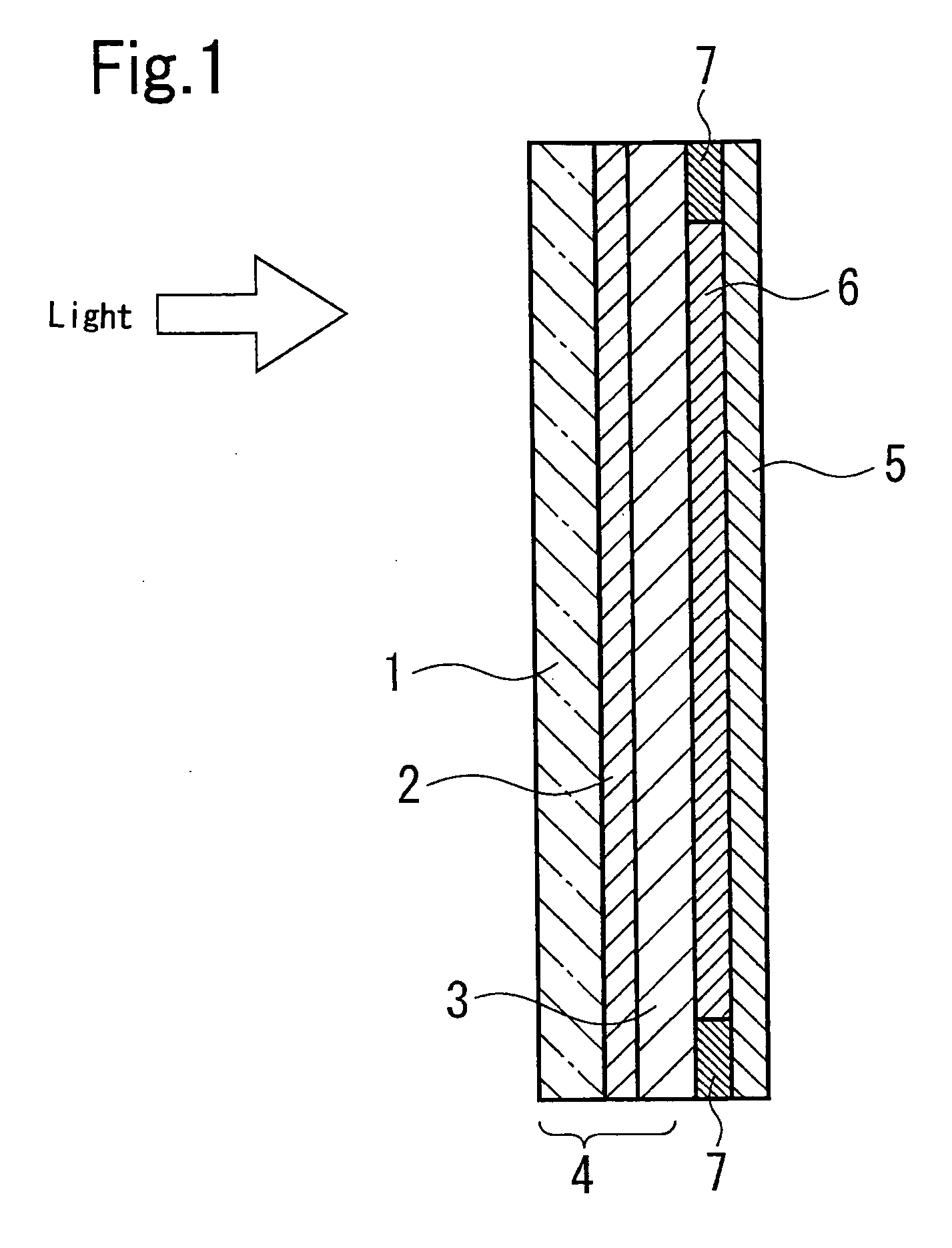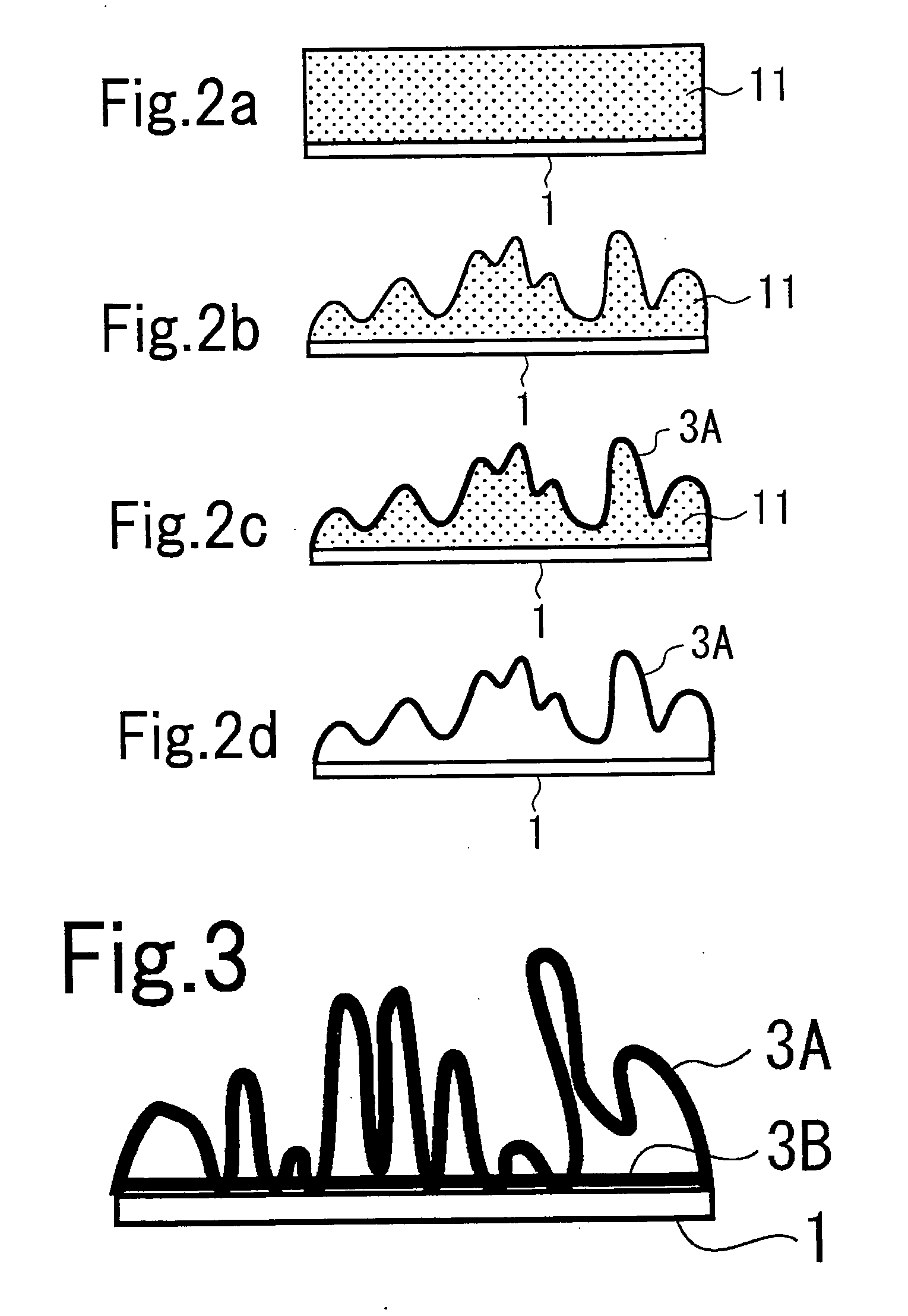Transparent electroconductive substrate, dye-sensitized solar cell electrode, and dye-sensitized solar cell
- Summary
- Abstract
- Description
- Claims
- Application Information
AI Technical Summary
Benefits of technology
Problems solved by technology
Method used
Image
Examples
example 1
[0067] An ITO target (SnO2 content: 36 percent by weight) was set to a magnetron DC sputtering apparatus, and a 188 μm thick PET film was placed in a vacuum chamber. The vacuum chamber was evacuated to 5×10−4 Pa with a turbo molecular pump, and subsequently Ar gas and O2 gas were introduced as a gas mixture at flow rates of 197 sccm and 3 sccm respectively so as to adjust the pressure in the chamber to 0.5 Pa. Then, a power of 4 kW was applied to the ITO target, and thus an ITO layer, or transparent electroconductive film, was formed to a thickness of about 300 nm on the PET film.
[0068] The transparent electroconductive film was immersed in a hydrochloric acid aqueous solution with a pH of 2.0, and the surface resistance with time was measured to evaluate the acid resistance. The results are shown in Table 1.
example 2
[0087] An ITO target (SnO2 content: 10 percent by weight) and a Ti target were set to a magnetron DC sputtering apparatus, and a 188 μm thick PET film was placed in a vacuum chamber. The vacuum chamber was evacuated to 5×10−4 Pa with a turbo molecular pump, and subsequently Ar gas and O2 gas were introduced as a gas mixture at flow rates of 197 sccm and 3 sccm respectively so as to adjust the pressure in the chamber to 0.5 Pa. Then, a power of 4 kW was applied to the ITO target, and thus an ITO layer was formed to a thickness of about 300 nm on the PET film. Then, after completely purging the chamber with Ar gas, Ar gas and O2 gas as the gas mixture were introduced again to the chamber at flow rates of 170 sccm and 30 sccm respectively so as to adjust the pressure to 0.5 Pa. Then, a power of 6 kW was applied to the Ti target and a TiO2 thin layer was formed to a thickness of about 30 nm on the ITO layer by reactive sputtering, thus forming the transparent electroconductive film.
[00...
PUM
| Property | Measurement | Unit |
|---|---|---|
| Percent by mass | aaaaa | aaaaa |
| Thickness | aaaaa | aaaaa |
| Weight | aaaaa | aaaaa |
Abstract
Description
Claims
Application Information
 Login to view more
Login to view more - R&D Engineer
- R&D Manager
- IP Professional
- Industry Leading Data Capabilities
- Powerful AI technology
- Patent DNA Extraction
Browse by: Latest US Patents, China's latest patents, Technical Efficacy Thesaurus, Application Domain, Technology Topic.
© 2024 PatSnap. All rights reserved.Legal|Privacy policy|Modern Slavery Act Transparency Statement|Sitemap



